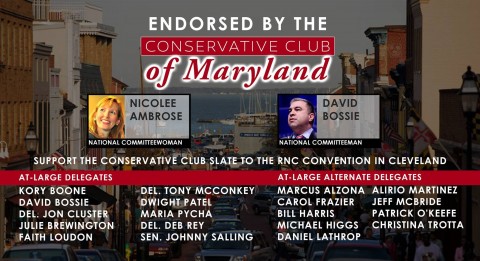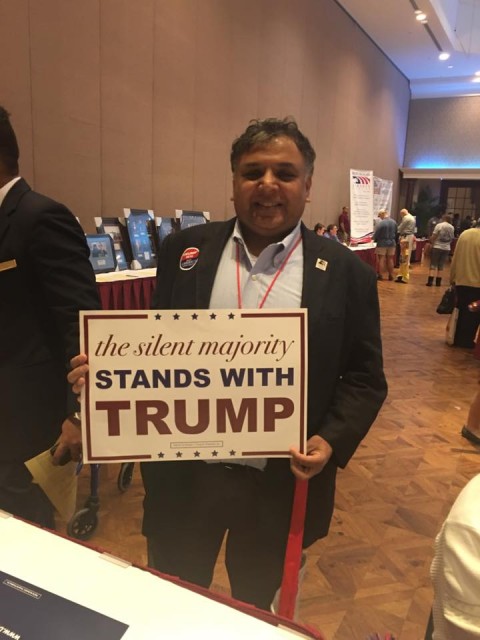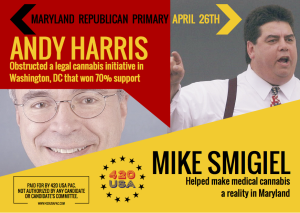I don’t always agree with pundit Erick Erickson, but I remain a fan of his because he comes at things from a unique but conservative perspective. Erick was one of those #NeverTrump folks who eventually came around about the same time I did, since we both voted for him the second time. So while the conventional wisdom is that Donald Trump will run and win a second term, Erick pumps the brakes a little bit on the idea in two different respects and I think both deserve discussion.
Given that modern American presidents tend to win a second term, it would be silly for Republicans to restore President Trump to office wherein he could only stay four years. Republicans would be giving up the historic default of eight years for one man to serve two separate four year presidencies. The 2028 primary would begin before the 2024 presidential cycle even concluded. He’d be the lamest of ducks.
It would also be silly for the GOP to put in office a man who’d be no younger than Joe Biden is now. The GOP has a remarkable bench with deep experience. Mike Pompeo, Nikki Haley, Josh Hawley, Tom Cotton, Ted Cruz, Marco Rubio, Doug Ducey, Kristi Noem, Ron DeSantis, and Mike Pence all have tremendous experience and all are younger than either President Trump or President Biden. Regardless of what you think about any of them individually, it would be a bit nuts to give up a potential eight years for any one of them for no more than four years for a second Trump term.
“It’s Only Sensical For the Nonsense,” Erick Erickson, January 18, 2022.
One could have accused the Democrats of the same thing by nominating a President who at one point openly eschewed a second term. Many thought Joe Biden’s job was that of picking a good vice president so she could be in office for ten years, with Biden stepping aside January 21, 2023. Obviously it could still happen but he definitely screwed up in picking the VP, who is reportedly hated by most of the Obama-era staffers in Biden’s White House.
And any of the names Erickson picked out would be good candidates for president, a light year’s improvement over the current occupant of the Oval Office. I think the top three for me at a 41,000 foot level, without getting into the nuts and bolts of where they stand on particular pet issues, would be DeSantis, Cruz (who I voted for last time in the primary), and Pompeo. I eventually was won over by the policies of Donald Trump but I can see where people may be thinking supporting him in 2024 is a hard pass, which may be why Trump is trying to clear the field by planning so many events this year.
Erickson goes on to make just this point by citing an interesting poll number. This is a longer blockquote, I believe it’s a radio show transcript from this past Tuesday that he added to his Substack:
If you’re listening to me right now, and you are 50 years or older, particularly 55 and older, then you likely believe Donald Trump is the leader of the Republican party. If you are younger than that, if you’re in your 40’s, your 30’s, your 20’s, you are less likely to be looking forward to the return of Donald Trump. It is a demographic thing.
60% of Republicans say they want Donald Trump to run again. He is the leader of the party. That’s down from 90% in November of last year, or November now of 2020. It’s down from 75% after January of 2021 to 60%, according to the polling averages. Averages are a little better indicator than an individual poll. So slightly less than two thirds of Republicans believe Donald Trump is the leader of the party. That’s actually fallen significantly in a year and a half. The people most likely to still believe it are over 50. Younger people are moving on fairly rapidly within the GOP. Some of you are going to send me hate mail and say, “This is all because I hate Donald Trump.” Not true. Just follow along and listen to me here before you rush to your keyboards.
Donald Trump held a rally in Arizona (last) weekend. I only know about the Donald Trump rally in Arizona over the weekend because the people who hate Donald Trump felt compelled on social media, CNN, and MSNBC, to tell us all what he said. The people who are most likely to talk about Donald Trump at this moment are the diehard Trump supporters.
“The Trump Haters Have Only Trump,” Erick Erickson, January 18, 2022.
I wish I had the numbers to back this up, but I don’t recall there being a whole lot of push to bring Jimmy Carter back in 1984, although they got the next best thing, the sacrificial lamb in Carter VP Walter Mondale, nor did we have a call for another term of George H.W. Bush in 1996. That time we got a different retread in Bob Dole, who lost with Gerald Ford in 1976 to the aforementioned Carter/Mondale team.
Interestingly enough, I think Erick brought up at some point previously that both those incumbents (Carter and Bush 41) lost in part because they had primary challenges: Carter in 1980 from Ted Kennedy and GHWB in 1992 from Pat Buchanan. Even more interesting: those two elections were among the most influenced nationwide by third candidates on the November ballot – liberal Republican John Anderson in 1980 and eventual Reform Party standard-bearer H. Ross Perot in 1992, when he ran as a true independent. I don’t think my memory is completely shot yet on these long-ago campaigns, so obviously this poll cited above is a testament to Donald Trump’s popularity with his base, and certainly the GOP will back him should he be the 2024 nominee. The question is: should he be?
To play a devil’s advocate, there are two key factors that would point to a “anyone but Trump” campaign in 2024. Most obvious is Trump’s age, as he would be 78 on Election Day 2024. Assuming Joe Biden makes it that long, our nation goes into uncharted territory this November 20 as we will have an octogenarian as our President for the first time. Do we really want to go with a second in a row? I tell you, those Boomers just can’t let go of power (although, in truth, Joe Biden is a member of the Silent Generation as he was born after 1928 and before 1946 – he almost certainly will be the only such President. After Ronald Reagan, who was close to 70 when he took the oath of office, and the 64-year-old at his inauguration Bush 41, we then skipped the Depression generation by going young with the Baby Boomer Bill Clinton.)
But the second is personality: Trump can be grating to some as he comes across as narcissistic. There are many who like that take-charge, take no crap aspect in the guy, but Joe Biden won the presidency because he convinced a number of mail-in ballot cards that he would be uniter to succeed the divisive Trump, who had really only divided the nation because the media told us so. And after at least eight years (some may argue we’ve been like this since Bush v. Gore) of divisiveness, surely there are Americans who like the America First, working-class everyman idea of the Trump Republican Party but think it’s time to move on from some of the figures who have divided us. At least in the first week of his term, we got an example from Glenn Youngkin in Virginia; however, the new governor’s bigger tests will be in dealing with what his legislature dishes out since the House of Delegates is Republican but the Senate remains Democrat because no seats were contested last year. (Had that been up for grabs, Virginia may well have switched from a Democrat trifecta to a Republican one overnight.)
Perhaps the Trump strategy is to run again with a young VP he can count on to carry on his legacy for another eight years, since there’s no way we’re repealing the 22nd Amendment anytime soon. (Trump only won 30 states the first time, and such a repeal – which was also discussed during Reagan’s, and to a far lesser extent, Obama’s second term – isn’t going to grab any of the states where Trump lost both elections.)
Someday historians may find out that the 2020 election was our “WTF” moment, the time when all logic seemed to go out the window and Americans voted for a slow national suicide. If we don’t want to fall like Rome, we need to make a course correction and it’s going to have to last at least eight years with a compliant Congress and court system that has restoring our Constitutional system in mind. If Donald Trump is the guy to lead that effort, more power to him – but he can’t be the only one.
Update: If you thought Erick Erickson was bad, you should get a load of what Ann Coulter had to say about Trump’s chances in 2024, comparing him to how Sarah Palin flamed out before the 2012 campaign. Remember when she used to be one of the biggest Trump backers?




